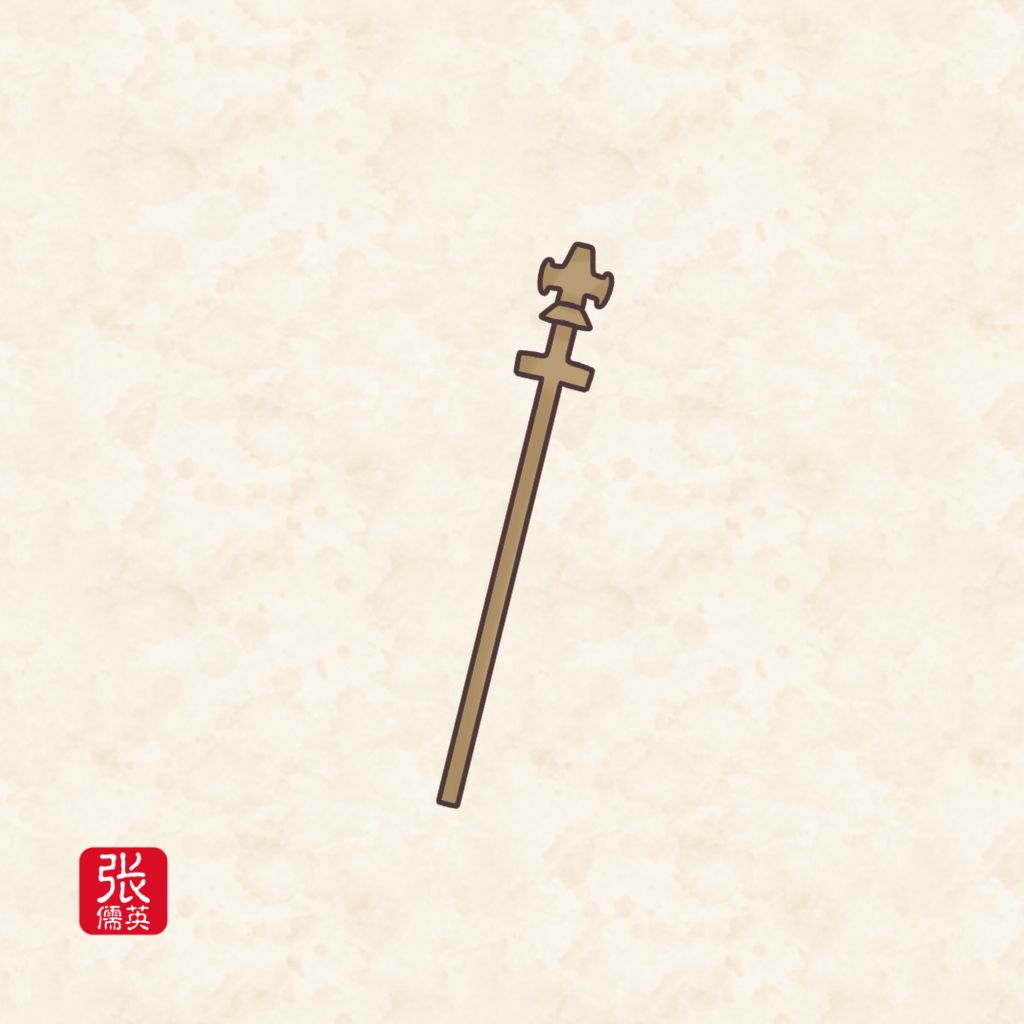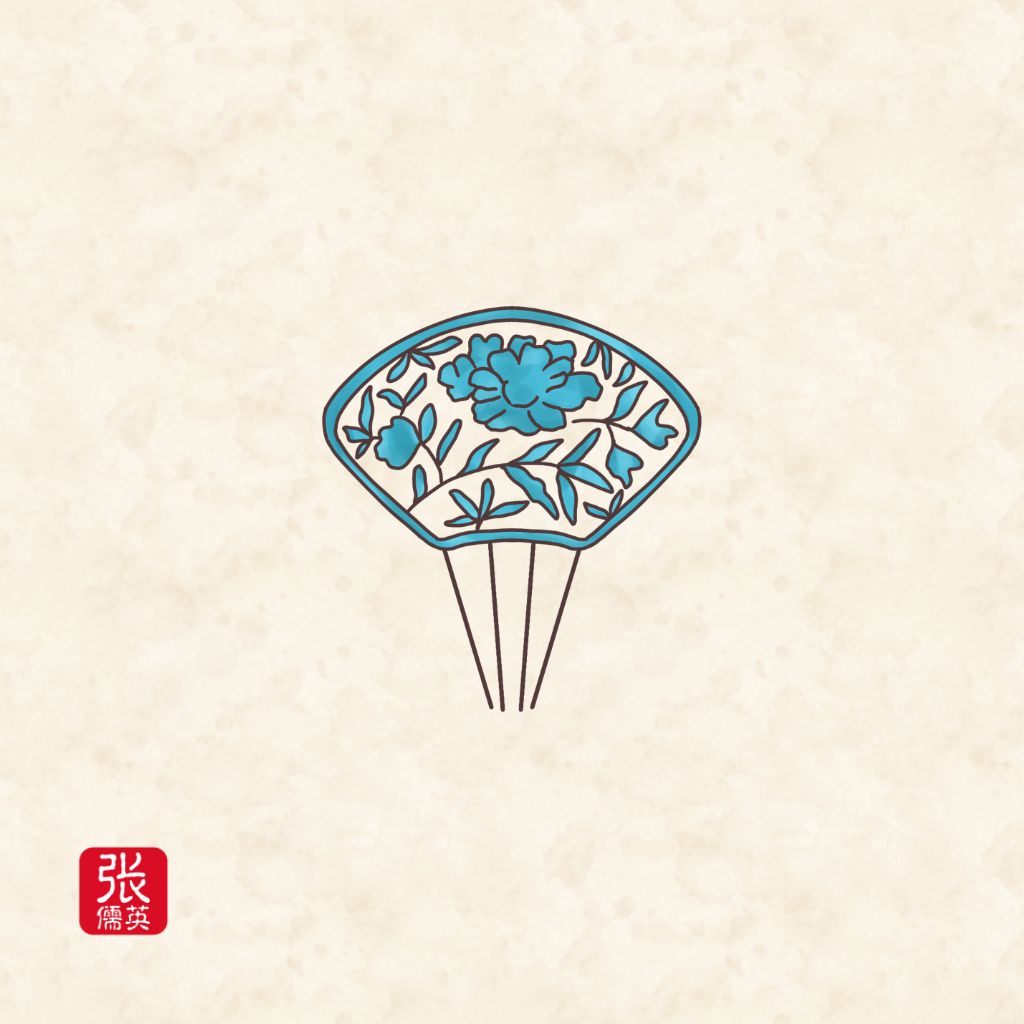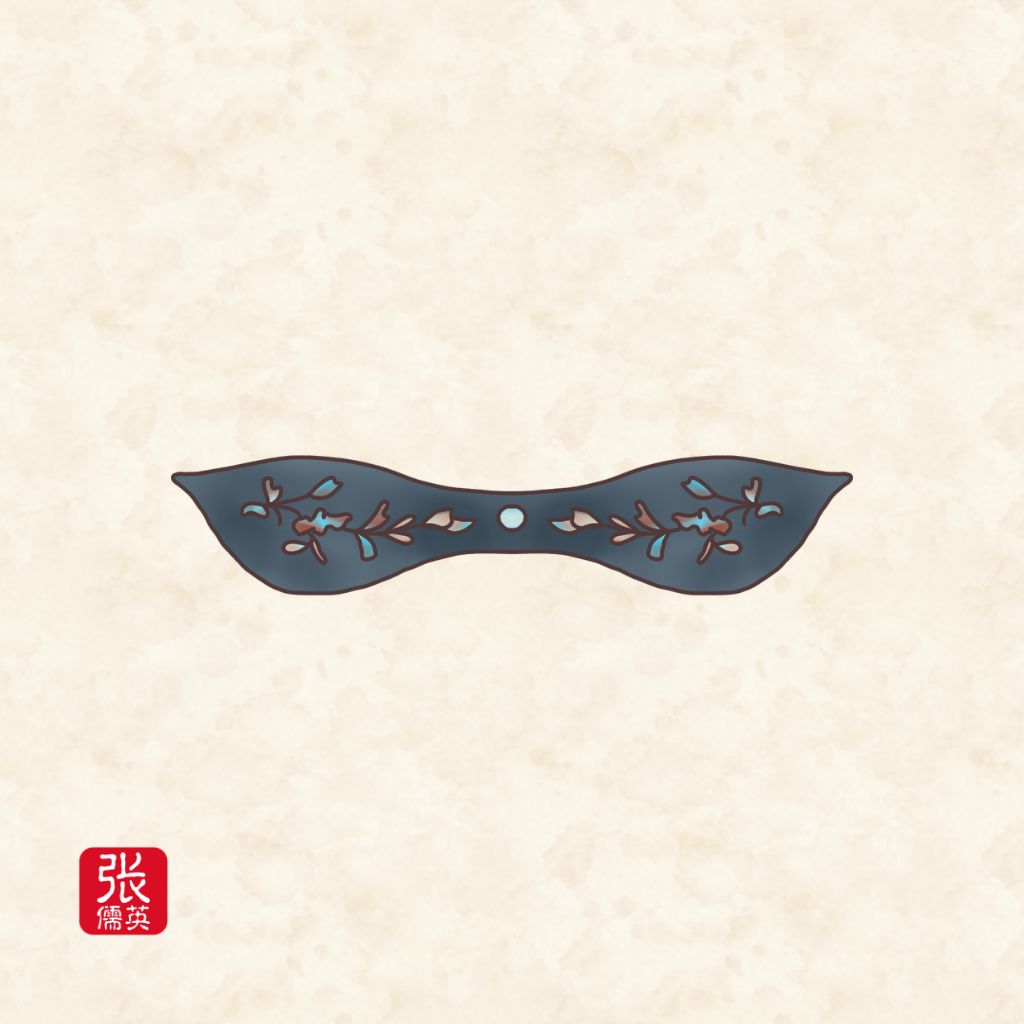Styles of Ancient Chinese Hair Accessories
Ji (笄 ; jī)
The word Ji is quite familiar to everyone — it has two meanings.
As a noun, it refers to a type of hairpin used in ancient times to fasten hair or secure a hat. As a verb, it refers to the coming-of-age ceremony for girls at fifteen years old — specifically, the Ji ceremony.
Ji is a long, needle-shaped ornament used in ancient China to secure hair buns or crowns. Its earliest use can be traced back to the Neolithic period. Starting from the Zhou dynasty, the Ji-li (coming-of-age ceremony) system was established; a girl’s Ji ceremony at age fifteen marked her adulthood. The earliest materials were mainly bone; during the Shang and Zhou periods, materials such as jade, bronze, gold, and silver were introduced. In the Warring States period, jade Ji with mortise-and-tenon inlay craftsmanship appeared. After the Han dynasty, it gradually developed into Zan (簪), type ornaments, and by the Qing dynasty, it evolved into flat, long-handled shapes.
Different materials corresponded to social classes: jade Ji were reserved for the royal family; ivory Ji were used by wives of scholars and officials; commoners could only use bone Ji. Its function was both practical and ceremonial — used to secure hair or crowns in daily life and also as a core object in adulthood ceremonies.
Zan (簪 ; zān)
Zan is a long pin used by ancient people to fix their hair bun or attach their crown.
Zan was an ornament worn by both men and women in ancient times, developed from the Ji. It was used to secure hair buns or crowns and was the most basic and common fixing and decorative tool in ancient Chinese hairstyles.
Connected to the word zan is also Zan Hua (簪花 ; zān huā), which means “to wear flowers in the hair.”
Chai (钗 ; chāi)
Chai was a type of head ornament worn by ancient women, composed of two joined hairpins, often made of gold, jade, or bronze, serving both decorative and practical functions.
As a traditional head ornament, Chai could be divided into categories such as gold Chai and jade Chai.
Buyao (步摇 ; bù yáo)
Buyao was a type of head ornament worn by Han Chinese women. It was named “Buyao” (literally “sway as you walk”) because it moved when the wearer walked.
It was often crafted from gold bent into shapes such as dragons and phoenixes, adorned with pearls and jade. From the Six Dynasties onward, designs became more elaborate, shaped like birds, animals, or flowers, sparkling brilliantly and often mixed with Chai and Dian ornaments. It was inserted into the hair, made mainly of gold, silver, jade, or agate.
The Buyao originated as early as the pre-Qin period, developed through the Han, Wei, and Northern and Southern Dynasties, and reached its peak in the Tang dynasty.
Bianfang (扁方 ; biǎn fāng)
Bianfang was a special, large hairpin worn by Manchu women with their Qitou hairstyle. It was flat and bar-shaped, made of gold, silver, jade, or bronze, often inlaid with gold, silver, and gemstones forming auspicious patterns. When worn, it passed through the bun, creating a visual contrast between the black hair and the greenish jade.
In the Qing imperial court, bianfang could reach 1 chi 2 cun (around 40 cm) in length; among commoners, it was typically 32–33.5 cm long and 4 cm wide, horizontally inserted into liangbatou or dalachi hairstyles as a supporting structure. According to Zaitao and Yun Baohui’s records, noblewomen often used white jade or jadeite bianfang, and its form and function resembled the long hairpins used by Han men. During mourning, the wearer replaced it with a small white bone or silver Bianfang (about 3 cun long) to show distinction.
The surface of the Bianfang was often covered with blue satin embroidery or inlaid with jewels. When worn by princesses or consorts, both carved ends were intentionally exposed, with hanging tassels echoing the flowerpot shoes, highlighting a dignified appearance. Qing palace collections, such as a gold openwork jewel-inlaid bianfang measuring 34.7 cm long and 4.7 cm wide, demonstrate typical craftsmanship of the era.
Shubi (梳篦 ; shū bì)
Shubi (also called Zhi) refers to combing tools — one of the eight major types of ancient Chinese hair ornaments and an ancient traditional handicraft.
Combs with sparse teeth are called Shu (梳), and those with dense teeth are called Bi (篦). Shu were used to detangle hair, while bi were used to remove dirt. They were made from bone, wood, bamboo, horn, or ivory. Shubi were indispensable personal items in ancient times, especially for women, who rarely went without them, forming the habit of wearing combs in their hair.
Besides being a tool for grooming hair, over time, Shubi also became a decorative hair accessory, as we can often see in paintings from the Tang dynasty.
The most famous production center was Changzhou, Jiangsu Province. Changzhou Shubi is a traditional handicraft with a long history, known as “palace combs and famous Bi.” In 2008, they were listed as a national intangible cultural heritage, with the Changzhou Comb Factory recognized as the inheritor. They are displayed in the Changzhou Museum and are one of the “Three Treasures of Changzhou,” along with “Liúqīng bamboo carving.”
Huasheng (花胜 / 华胜 ; huā shèng)
Huasheng (华胜 / 花胜) is a type of flower-shaped women’s accessory, made using paper-cutting or silk-cutting techniques, often made in the shape of flowers or plants, worn either in the bun or on the forehead.
Mo’e (抹额 ; mò é)
Mo’e is one type of head ornament in ancient Chinese culture. Mo’e could be made of cloth, silk, or brocade, folded or cut into a ribbon shape, then tied around the forehead. It was usually decorated with embroidery, pearls, or jade.
Yet, what we’ve explored today is only a glimpse of the ancient Chinese women’s accessories. Beyond hair accessories, there were also earrings, pendants, and delicate accessories that reflected identity, emotion, and status. I can’t wait to share more of these hidden treasures with you~









